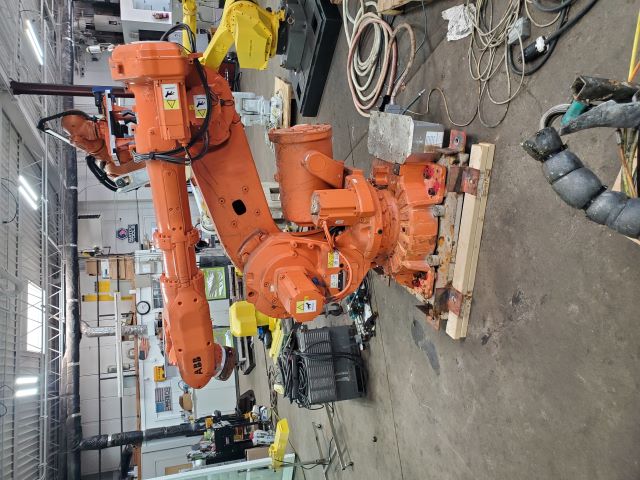Benefits of Robotic Press Tending

Robotic press tending involves automating the process of operating press machines with industrial robots. Robots can load, position, unload, and transfer parts as part of a press tending application. Automating press tending with the FANUC M-20ia or another industrial robotic arm provides consistent and reliable labor. The repetitive nature of operating press machines makes it a highly undesirable job for workers but also ideal for robotic automation. Automating press tending with industrial robots provides several benefits.
- • Increased Productivity - Industrial robots operate at faster and more consistent rates than humans. Automating press tending with the ________ will significantly reduce cycle times. Robot manipulators are capable of loading and unloading parts from press machines at a rate of one part per 7.5 seconds which works out to about 480 parts per hour. That kind of speed cannot be matched with manual labor. Not to mention manufacturing robot arms do not tire, take breaks, or become distracted unlike humans. Robots are capable of taking the same amount of time for each part. Industrial robots can also tend press machines around the clock. Longer runtimes and faster speeds mean more parts can be processed in less time, increasing productivity.
- • Safer Operations - Automating press tending with industrial robots removes workers from being exposed to hazards, creating a safer work environment. Fewer injuries and work related accidents occur with robotic press tending. Repetitive lifting and movements can cause musculoskeletal injuries while press machines can pose additional safety risks. Press tending robots are able to operate safely in close proximity to machinery. Workplace accidents will be significantly reduced preventing unexpected disruptions to productions.
- • Error Mitigation - Articulated robots are programmed for accuracy. They can correctly and safely load and unload all parts from press machines. Ensuring parts are handled securely and correctly prevents errors and defects that can decrease part quality. With workers it is impossible to regulate the handling of parts. This can cause parts to be inaccurately processed or to become damaged due to poor handling. Errors increase scrap and material use as well as cycle times. Automating press tending with the Yaskawa MH80 eliminates human involvement and therefore mitigates errors.
- • Lower Costs - Robotic press tending will reduce the amount of manual labor needed. With fewer workers involved labor costs will decrease. With press tending robots there are no expensive hourly rates, yearly salaries, or benefits to pay. Material costs can also be reduced as errors and mistakes are unlikely with industrial robots. Even utility costs can be lowered with the energy efficiency of six axis robots. Lowering costs can allow manufacturers to expand their profit potential.
- • Secondary Applications - Not only can a robotic manipulator automate the tending of press machines but it can also automate secondary applications, streamlining operations. Robots can automate additional processes that may be needed such as material removal, dispensing, and assembly.
- • Bridge Labor Gaps - Many manufacturers are experiencing a labor shortage. Companies are struggling to find the skilled labor needed to fill vacant positions. Automating press tending with the ABB 6640 and other factory robots bridges the skills gap. Robots provide reliable labor for undesirable jobs. With robotic automation companies do not have to deal with high turnover or worker shortages.
Robots Done Right is the place to start when it comes to used robots. Contact us if you are interested in buying or selling a used robot.